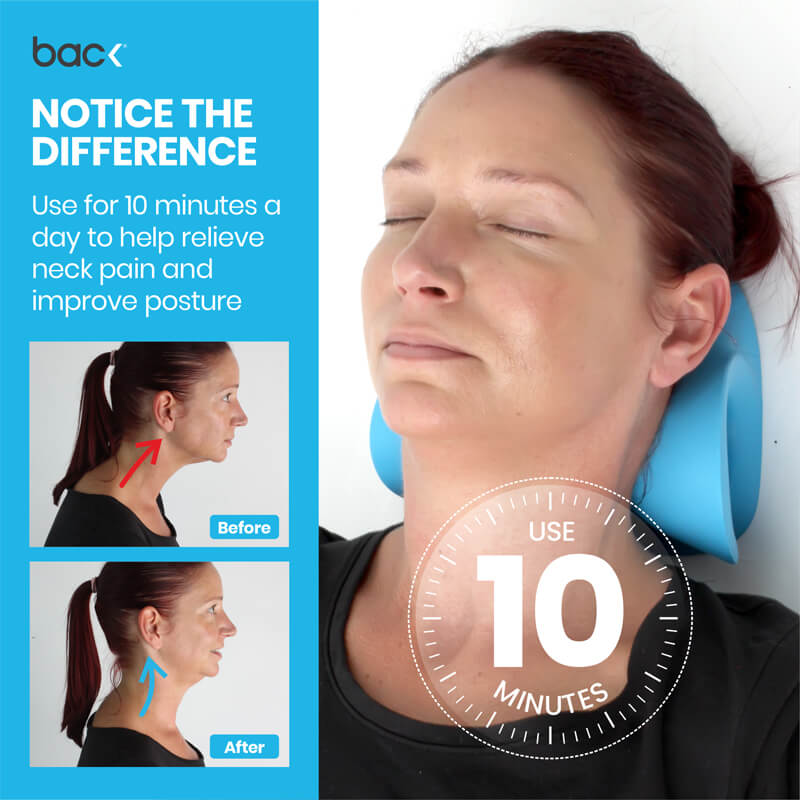Experience the Conveniences of the Neck Cloud for Neck and Shoulder Relief
Experience the Conveniences of the Neck Cloud for Neck and Shoulder Relief
Blog Article
Neck Pain in the Office: Identifying Threat Variables and Implementing Ergonomic Solutions
Neck pain in the office is a common problem that can influence employee wellness and efficiency. By understanding the different threat factors contributing to neck pain and implementing ergonomic solutions, organizations can develop an extra helpful work environment.
Usual Sources Of Neck Discomfort
Neck discomfort in the work environment is a prevalent issue that can be attributed to numerous typical reasons. Among the main culprits is inadequate stance, which usually arises from prolonged periods of resting improperly at a workdesk or workstation. This can lead to stress on the neck muscular tissues and joints, causing discomfort and pain. Additionally, repeated activities such as regular flexing, twisting, or reaching can likewise contribute to neck discomfort over time. Stressing the neck by holding it in an uncomfortable setting for extensive durations, like nestling the phone in between the ear and shoulder, can worsen the issue (neck cloud).

Ergonomic Threat Variables
Poor comfort designs in the office can substantially add to neck pain amongst staff members. Elements such as incorrect desk height, inadequate chair support, and awkward positioning of computer displays can all play a function in the development of neck pain. When workers are forced to rest for prolonged durations in placements that strain their neck muscles, it can lead to rigidity, discomfort, and a lot more serious bone and joint concerns gradually.
In addition, bad ergonomic practices can result in employees taking on unpleasant postures while functioning, such as craning their necks to see a computer system screen or reaching uncomfortably for a mouse or key-board. neck cloud. These repeated movements and abnormal positions can place unnecessary stress and anxiety on the neck and surrounding muscles, causing pain and lowered performance

Workdesk Setup Recommendations
To minimize the threat of neck pain and discomfort, there are numerous workdesk setup suggestions that workers ought to think about. Ensure that the computer monitor is placed at eye level to protect against straining the neck by looking up or down.
It is additionally essential to have adequate lighting to reduce eye strain, as squinting or leaning Click This Link onward can cause neck tension. Organize the desk layout to keep regularly used products within arm's reach, restricting the demand for repetitive twisting or getting to movements. By applying these workdesk setup referrals, staff members can produce an extra ergonomic workspace that sustains neck health and wellness and lowers the threat of developing work-related neck pain.
Extending and Exercise Tips
To maintain versatility and decrease muscle mass stress in the work environment, including click to investigate stretching and workout regimens can be valuable for general health and productivity. Simple desk-friendly stretches can aid ease neck discomfort and avoid rigidity. Neck rolls, shoulder shrugs, and mild side-to-side neck stretches work in alleviating stress. Furthermore, integrating workouts like chin tucks, shoulder blade presses, and upper back stretches can assist reinforce muscular tissues that sustain great stance.
Setting suggestions or making use of apps that trigger motion can help establish a routine stretching regimen. By focusing on these activities, you can improve your physical well-being, decrease the danger of neck pain, and improve your total performance in the work environment.
Importance of Routine Breaks
In a fast-paced workplace where needs can add to physical pressures like neck pain, developing a routine that emphasizes the significance of routine breaks is critical (neck cloud). Taking normal breaks throughout the workday is important for reducing and preventing neck pain. Prolonged periods of resting or repetitive tasks can bring about muscle mass stress and rigidity in the neck and shoulders. By incorporating brief breaks right into the job regular, staff members can minimize the risk of establishing neck discomfort and improve overall comfort and efficiency.
Routine breaks enable employees to relax their muscle mass, stretch, and turn, protecting against stiffness and advertising much better blood circulation. Urging employees to take brief breaks every 30-60 minutes can help in reducing the accumulation of stress in the neck and shoulders. These breaks can also serve as a chance for employees to exercise leisure strategies or gentle neck stretches, better promoting bone and joint wellness. Executing a society that values and prioritizes routine breaks can have a considerable impact on lowering neck pain and boosting general wellness in the why not check here work environment.
Conclusion
To conclude, addressing ergonomic risk elements and executing proper workstation configurations are necessary in lowering neck discomfort in the office. By promoting great pose, providing adequate support, and motivating routine breaks and stretches, companies can create a much healthier and extra productive workplace for staff members. Focusing on employee wellness via ergonomic services is vital to protecting against discomfort and enhancing overall work environment satisfaction.
Neck discomfort in the work environment is a widespread issue that can influence staff member wellness and efficiency. By recognizing and attending to these common causes of neck pain in the work environment, companies can take aggressive steps to create a much more ergonomic and comfortable job atmosphere for their employees.
Poor ergonomics in the office can dramatically contribute to neck pain among staff members. By executing these workdesk configuration suggestions, workers can develop a much more ergonomic work area that sustains neck health and decreases the danger of establishing work-related neck discomfort.
Neck rolls, shoulder shrugs, and gentle side-to-side neck stretches are reliable in relieving stress.
Report this page